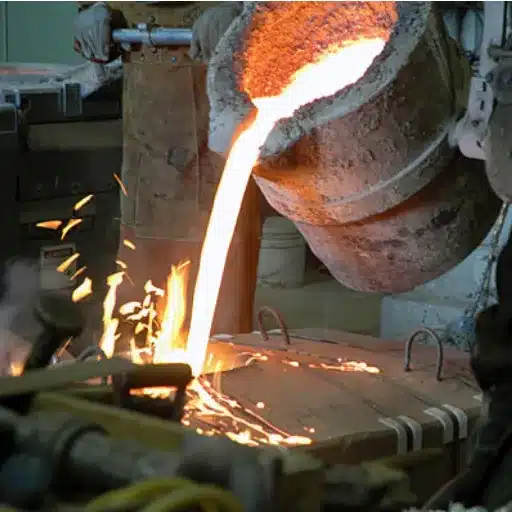From construction and manufacturing to energy and transportation, stainless steel pipes serve various industries. For engineers, specifiers, and industry stakeholders, knowing the standards and specific requirements for these pipes is important for managing quality, safety, and efficiency. One such important standard is the ASME B36.19M, which details the dimensions, tolerances, and schedules of stainless steel pipes. This article aims to explain ASME B36.19M by highlighting its major sections so that readers understand foundational ideas of the specification. The guide will be helpful for individuals who are learning about stainless steel pipe standards or those who want to enhance their existing knowledge.
What is the ASTM Standard for Stainless Steel Pipe?
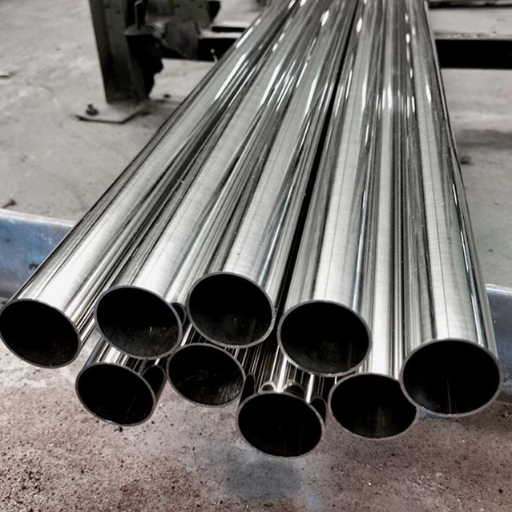
The ASTM standard regarding stainless pipes is ASTM A312. This specification covers high temperature and general corrosive service and includes coldworked and straight-seam welded austenitic stainless steel pipe. This spec gives details on chemical composition, mechanical properties, and manufacturing processes which ensures the pipes works at different levels of industrial applications.
Overview of ASTM A312
I know that ASTM A312 is an important standard for the use of stainless steel pipes in demanding applications. The components of this specification are tailored to ensure that the pipes satisfy rigid criteria pertaining to chemical composition, mechanical attributes, and manufacturing procedures. Its concentration on corrosive and high-temperature surroundings proves its worth for oil and gas, chemical processing, and power generation industries. Adherence to ASTM A312 entails that the end-users of the products can depend on the durability, safety, and reliability of stainless steel pipe products.
Role of ASTM in Pipe Manufacturing
ASTM establishes standardized procedures to oversee quality, safety, and performance in pipe manufacturing. These standards enable manufacturers to produce pipes through outlined guidelines pertaining to material requirements, sizes, and testing, thus achieving industry standards, uniformity, and dependability in multiple applications.
Key Differences Between ASME B36.19M and ASTM A312
the major distinction between ASME B36.19M and ASTM A312 is that they each have a distinct focus and objective. As noted, ASME B36.19M is concerned with a specific measurement system that determines the outside diameter and wall thickness of stainless steel pipes utilized in high-pressure and temperature settings, for instance, power plants or the chemical industry. At the same level, ASTM A312 explains the specification of the constituents and other particulars for both seamless and welded stainless steel pipes. On one hand, ASME appears to concentrate on the engineering use of standardization concerning the pipe’s size, while on the other, material quality and mechanical properties are left to ASTM to ensure that they are within predefined performance limits. All standards as put in B36.19M and A312 are made in a way to work harmoniously to assure all statements made regarding stainless steel pipes’ dimensions for critical operations are accurate and materials used are reliable.
How Does ASME B36.19M Define Pipe Dimensions and Tolerances?
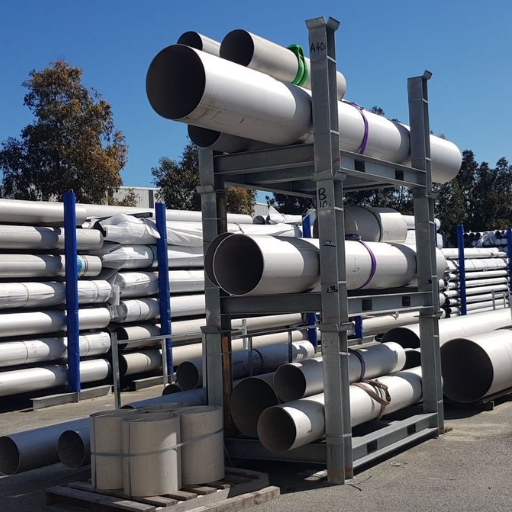
ASME B36.19M appears to furnish a clear attempt towards standardizing the range of pipe dimensions for specific stainless steel pipes. It assigns nominal pipe sizes, specifies wall thickness category as Schedule 5S and Schedule 10S, and maintains diametric continuity amongst products. These standards facilitate uniformity within manufacturing processes and enable pipes to be manufactured to predetermined tolerances to avoid being too loose or too tight during fitting. Compliance with these specifications permits dependable and compatible performance for challenging applications.
Understanding Wall Thickness and Schedule Numbers
To grasp plumbing wall thickness and schedule numbers, understanding it qualitatively from a step-by-step approach is the most effective way. As a professional in the field I can break it down simply.
Putting it in simple words, wall thickness is the thickness of the pipe’s walls, and the schedule number is a pipe’s wall thickness in a descriptor form. That means a schedule 100 pipe has thicker walls than a schedule 20 pipe. Now, why does this matter? The wall thickness directly affects the pipe’s structural strength and ability to endure pressure. Here is the elaboration of these parameters:
- Pipe Size (Nominal Pipe Size or NPS): This is the first thing to consider. The suggested nominal size of the pipe provides a very basic approximation of its diameter and is useful for categorizing the pipe based on its thickness.
- Pressure Rating: The pipe’s wall thickness also determines the internal pressure it can safely withstand. A Schedule 40 pipe, for example, would be able to bear less pressure than a Schedule 80 pipe of the same diameter.
- Material Used: Along with the wall thickness, the schedule also depends on the material composition of the pipe. For instance, stainless steel pipes, unlike other metals, have lower tolerances when accounting for wall thickness compared to carbon steel.
- Application Requirements: As noted earlier, the thicker the wall, the stronger the pipe. This is critical in high-temperature or high-pressure systems, which is why engineers prefer thicker-walled pipes for safety and system reliability.
By optimizing these parameters: NPS, pressure requirements, material characteristics, and application requirements, you have the ability to select the appropriate pipe for your particular project. The objective is to always match the conditions the pipe is supposed to undergo with the abilities the pipe can provide, achieving optimum performance and dependability.
The Importance of Outside Diameter in Specifications
When it comes to pipe specifications, the outer diameter (OD) is perhaps the most crucial aspect because it determines the suitability with respect to other fittings and connections. Proper and accurate measurements of OD are very important for maintaining supports, achieving accuracy in alignment, and preventing dripping leaks within systems containing pipes. It also helps in estimating the value of pressure and the strength of materials; hence, in both theoretical and practical applications, it cannot be neglected.
Standard Pipe Dimensions and Tolerance Levels
The accuracy of standard tolerances and dimensions on pipes is critical for the consistent performance and reliability of piping systems. Following these standards accurately ensures that there is minimal installation and operational work error. Tolerance levels define the degree of deviation from the nominal pipe dimensions due to manufacturing processes, which still allows the pipe to function. Precision within these parameters is important to ensure adequate dimensional compatibility with fittings, which enables smooth interfacing and pressure control. We can maintain the desired levels of safety and efficiency across multiple applications by taking into consideration the factors discussed above.
What Are the Common Specifications for 304 and 316 Stainless Steel Pipes?
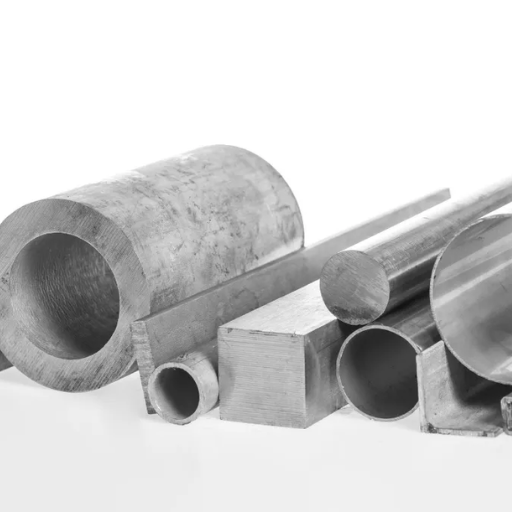
Most widely used 304 and 316 stainless steel pipes are associated with ASTM A312, A213, and A269, which specify the requirements for stainless steel seamless pipes and welded pipes. These specifications include the material makeup, the maximum tensile strength, and the overall measurements of the stainless steel pipes. Both grades have good resistance to corrosion, but 316 has greater resistance as it contains molybdenum. Also, the surface finishes specified include annealed, pickled, or polished, depending on the application requirements. Compliance with these standards delivers longevity, dependability, and effectiveness in both industrial and commercial uses.
Comparing 304 and 316 Grades
The selection of grade 304 or 316 relies primarily on the environment and application. Both grades offer excellent resistance to corrosion, however, 316 contains molybdenum that protects against chlorides and harsh chemicals, thus providing better corrosion resistance. Conversely, 304 is economical and very adaptable, which makes it the most popular choice for general applications that do not face severe conditions. When the need arises to balance cost against performance and durability, a careful assessment of the factors associated with the environment and demands posed by the application is essential for selecting the right grade.
Applications and Corrosion Resistance of 304 vs 316
While looking into the applications and corrosion resistance characteristics of 304 and 316 stainless steel, I prefer to analyze the parameters associated with each grade. Here’s what I think:
-
- Corrosion Resistance
Here, the increase of molybdenum in 316 stainless steel is what sets 316 apart, as it greatly improves its resistance characteristics against pitting and crevice corrosion, particularly in the presence of chlorides or salts. Marine environments and chemical processing industries are some fields where 316 stainless steel is preferred over 304, as 316 weathers harsher conditions better.
- Applications in Different Environments
-
-
- 304 Stainless Steel: This grade of stainless steel is an amazing all-rounder and is mostly used for general indoor purposes like construction, sinks, food preparation, and other kitchen equipment. It works well in surroundings with little risk of harsh corrosion. Moreover, it is inexpensive, which is why it has become popular for dependable solutions that fit within budget constraints.
- 316 Stainless Steel: The latter is meant for tougher jobs. This grade works perfectly in constantly wet environments where salts or industrial chemicals are present. Think of marine uses, like ship furniture, coastal architecture, medical appliances, or even municipal wastewater treatment plants.
-
- Durability and Longevity
If a use case requires long-term durability in a hostile environment, 316’s advanced protection to r corrosion over time will more than compensate for the added expense. However, for low to neutral chemical exposure environments or cost-sensitive applications, 304 will perform excellently.
- Cost Considerations
As is often the case, increased resistance and durability come at an additional cost for 316 due to the added molybdenum and nickel. For less demanding environments, 304 offers the best combination of price, flexibility, and functionality.
In the end, it is a matter of deciding operational requirements along with environmental obstacles with regard to choosing between 304 and 316. Always keep in mind corrosion due to moisture, chemical exposure, and temperature fluctuations. By considering these parameters, it is possible to choose the grade that is most suitable for your project.
Availability and Suppliers of 304 and 316 Pipes
Both 304 and 316 stainless steel pipes are accessible from many suppliers around the world. Often reputable manufacturers and distributors carry these grades in varied dimensions and particular types to satisfy different industries. It is important to obtain these materials from reliable suppliers who conform to global standards of quality to guarantee dependability and durability.
How Are Welded and Seamless Pipes Different?
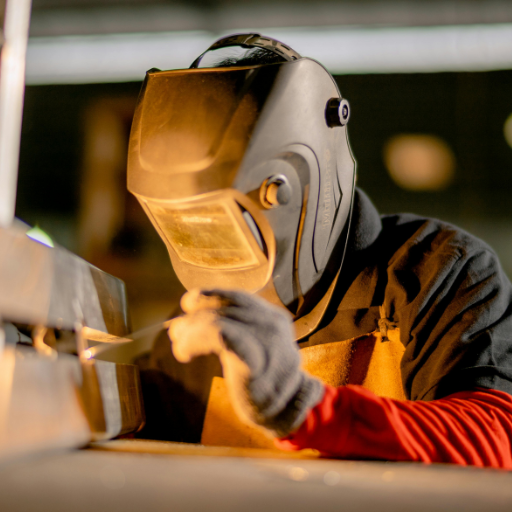
The main difference between welded and seamless pipes lies in their construction methods as well as their use cases. In my experience, welded pipes are constructed from steel that is rolled into a cylinder and welded at the seam, which can be a weak structural point in high-pressure situations. Conversely, seamless pipes are shaped through an extrusion process, resulting in fully formed pipes devoid of any joints, making them better suited for critical applications that demand strength and endurance. Each type serves specific purposes; For standard applications, issues related to cost make welded pipes a better option, while seamless pipes dominate in harsh conditions found within the oil and gas or chemical industries.
Manufacturing Process of Seamless Stainless Steel Pipes
Focusing on the seamless stainless steel piping fabrication, I cannot emphasize enough that the process’s precision and quality are always priorities. The procedure begins with a solid steel billet which fully requires softening by heating. Subsequently, the forefront of the billet is pierced to form a hollow shell, usually done by a rotary piercing mill. Thereafter, the shell is expanded to the necessary diameter and thickness by a number of rolling or extrusion methods. In the end, the pipe is subjected to comprehensive heat treatment followed by precise straightening and finishing to strict requirements for strength, uniformity, and corrosion resistance proprietary to an industry. It is this technique that provides a component devoid of welded joint weaknesses, which are harmful in high-performance and high-pressure environments.
Advantages of Welded Stainless Steel Pipes
I can say without a doubt that welded stainless steel pipes are one of the most economical and adaptable options available in the market. Their distinct advantages include:
- Cost-Effective
Welded pipes tend to cost less when compared to seamless pipes, owing to their simpler manufacturing process. In welded pipes, the required raw materials and energy are comparatively lower, which makes them an ideal choice for budget-constrained projects. These pipes have a lower price as compared to seamless ones. This is due to simpler manufacturing processes in welded pipes. The materials, energy needed are lower, thus welded pipes tend to cost less in budget-sensitive applications.}}
- Customizable Sizes
Welded pipes are easily customized to meet specific requirements as they can be produced in various lengths, diameters, and wall thicknesses. Such adaptability is beneficial to construction, fluid transport industries, and many other manufacturing sectors.
- Smooth Inner Surface
Welded pipes have polished inner surfaces owing to advanced welding techniques. This enhancement reduces frictional losses in transportation systems for liquids or gases and increases overall system efficiency.
- Corrosion Resistance
Welded stainless steel pipes are dependable even in harsh conditions, such as chemical plants or a marine environment, because stainless steel has exceptional corrosion resistance and welded stainless steel pipes retain this characteristic.
- Strength and Durability
Contemporary steel welding approaches guarantee the welded joints are strong and enduring. Pipes made from stainless steel, in conjunction with its natural durability, perform incredibly well when subject to high pressure and temperature.
- Readily Available
In comparison to seamless pipes, welded stainless steel pipes are more common in the market. This is especially helpful when dealing with impending project deadlines as it allows faster procurement processes.
- Eco-Friendly
The production of welded pipes and stainless steel’s fully recyclable nature helps accomplish sustainability goals due to the minimal waste created during the pipes’ production.
Taking all these elements into account, there is no surprise that welded stainless steel pipes are often utilized in numerous industries. They provide a reasonable pricing structure while remaining dependable and high performing.
Choosing Between Welded and Seamless Options
The decision of whether to use welded or seamless stainless steel pipes for your specific project goals will largely be determined. In particular, applications that demand high strength and durability under extreme pressure tend to go for seamless pipes owing to the uniform construction and their ability to withstand severe conditions. In contrast, welded pipes are far more versatile and economically practical, serving problem-solvers where efficiency is prioritized. In my experience, welded pipes tend to work really well in a myriad of industrial and architectural applications where the constraints are less stringent, particularly when budgets can’t stretch that far. Knowing the details of your application goes a long way in reaching the best decision.
How to Select the Right Wall Thickness for Your Pipe?
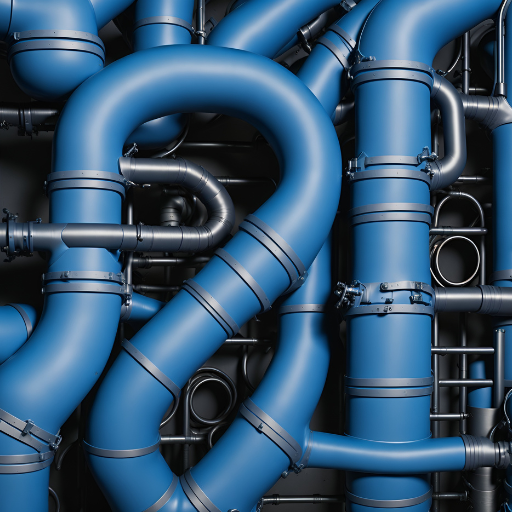
Three essential factors are the operating pressure, material transported, and the working environment when selecting the appropriate wall thickness for a pipe. Evaluate the maximum pressure the pipe is likely to be exposed to during operation, and select a thickness that exceeds this value to guarantee structural integrity and safety. Furthermore, factor in the type of material the pipe will transport. If it is abrasive or corrosive, higher wall thickness or special coatings may be needed. Finally, the influences of temperature changes, external loads or stresses, impacts, and other environmental concerns should be considered. Compliance with relevant industry standards will provide additional guidance, reinforced by engineering principles, in making an optimal decision.
Understanding Schedule Numbers and Their Uses
pertaining to schedule numbers and their functionalities, breakdowns on a sequential basis seem to help the most. Schedule numbers set forth are used to define a number of specifics in a piping system. For example, pipe schedule pipes with higher schedule numbers have a greater strength and pressure capacity, whereas pipes with lower schedule numbers have weaker strength and pressure handling capabilities. This is how I work through it:
1. Wall Thickness and Strength
The schedule number is almost synonymous with the wall thickness of the pipe. For example, Schedule 80 bumps the wall thickness of pipes relative to over Schedule 40. Industrial and high-pressure systems are examples of applications requiring (and more importantly, relying on) pipes with thicker walls – as they are more durable and can better withstand higher pressures.
- Operating Pressure
A pipe’s maximum allowable working pressure is directly proportional to the schedule of pipe to be used. Higher the schedule, higher is the internal pressure that the pipe is constructed to handle. I personally like to crosscheck the schedule with the working pressure of fluid or gas that is intended to be passed through the pipe system – it is a matter of safety and functionality.
- Material Choice
The type of material used to manufacture the pipe also tends to influence the schedule to be selected. For instance, a wide variety of schedules intended for particular industrial applications are available with steel and stainless steel pipes. Other types of pipes, like Plastic or PVC pipes, might have other standards called for. Remember to crosscheck the material and the schedule to ensure that they both fit the intended use.
- Application-Specific Needs
The schedule number for a given pipe is dependent on the substance that the pipe in question will be carrying, such as water, chemicals, steam, or even abrasive materials. For instance, some fluids that are corrosive in nature will need to be transported using pipes that have both thick walls and corrosive-resistant materials.
- External Factors
As important as the internal factors are, the external ones, such as temperature changes and mechanical stresses, and how these might change pipe usage performance. If the environment is harsh, the risk is high; hence, the scheduling number should increase, at least for the thicker pipes.
Following these parameters in a specific order allows me to select the optimal schedule number for every particular application with confidence. The balance between safety, operational effectiveness, cost, and the industry standard is always maintained.
Factors Influencing Wall Thickness Selection
Each pipe is designed according to specific industry standards, and I differentiate between them using a variety of criteria. First of all, I look to see if there are regulations about minimum and maximum wall thicknesses. Then, there are certain standards about the approximate operating temperatures and pressures that must be taken into consideration. How much of a specific fluid a pipe transports is also a vital criterion when considering how much stress a pipe can endure, along with other factors. I also think about what phase the fluid is in during the operation. If it is in an extremely corrosive and abrasive state, then a different approach must be considered. On top of everything, documents that govern best practices, remaining industry norms, and above all, system coherence are mandatory factors that need to be monitored in parallel. Evaluating these criteria gives me the fundamental aspects to focus on in order to prioritize system safety and efficiency.
Common Wall Thicknesses for NPS 14 and Other Sizes
For the considered application, common NPS 14 pipes range from Schedule 10 to Schedule 160. For general usage, Schedule 40 is the most cost effective, while still maintaining structural integrity. Even stronger, more dangerous settings like corrosive environments require thicker Schedule 80 pipes for safety reasons and durability. Regardless, the decision-making process must also include the operating pressure, temperature, and pertinent legislation.
Reference
- ASME Official Website – ASME B36.19M Stainless Steel Pipe – The official ASME page for the standard.
- ASME B36.19 M-2004 PDF Document – A detailed document on the dimensions and specifications.
- Piping Pipeline – ASME B36.19M Overview – A comprehensive guide to the standard’s scope and details.
Frequently Asked Questions (FAQs)
Q: What is ASME B36.19M, and why is it important for SS pipes?
A: ASME B36.19M is a standard specification for stainless steel pipes, providing detailed guidelines on dimensions, tolerances, and weight, ensuring consistency and reliability in manufacturing and application. It is crucial for ss pipes as it standardizes the outside diameter and wall thickness, making them suitable for various applications.
Q: How does ASME B36.19M differ from ASME B36.10M?
A: The main difference between ASME B36.19M and ASME B36.10M is the material they cover. ASME B36.19M is applicable to wrought stainless steel pipes, while ASME B36.10M is for carbon and alloy steel pipes. Additionally, B36.19M includes the suffix “s” in schedules like sch 10s and sch 40s to denote stainless steel specifications.
Q: What is the significance of the “s” suffix in schedule numbers like sch 10s and sch 40s for ss pipes?
A: The “s” suffix in schedule numbers such as sch 10s and sch 40s is used to differentiate stainless steel pipe specifications per ASME B36.19M from carbon steel pipe schedules. This suffix ensures that the specific requirements for stainless steel, particularly regarding dimensions and wall thickness, are met.
Q: What are the common applications of pipes conforming to ASME B36.19M?
A: Pipes conforming to ASME B36.19M are widely used in industries that require high corrosion resistance and durability, such as petrochemical, food processing, and pharmaceuticals. They are suitable for high or low temperatures and pressures, making them versatile for various industrial applications.
Q: How is the outside diameter of pipes calculated using ASME B36.19M standards?
A: The outside diameter of pipes per ASME B36.19M is calculated using standardized dimensions that ensure consistency across different manufacturers. The outside diameters are numerically larger than their corresponding nominal pipe size (NPS), providing a clear guideline for manufacturing and application.
Q: Why are smaller diameters of ss pipes often numerically larger than their corresponding NPS?
A: In ASME B36.19M, smaller diameters have outside diameters that are numerically larger than their corresponding NPS to accommodate the wall thickness needed for strength and durability. This ensures that the pipes can withstand the pressures and temperatures commonly encountered in industrial applications.
Q: Are pipes nps 12 and dn 300 commonly used in ASME B36.19M specifications?
A: Yes, pipes nps 12 and dn 300 are commonly used sizes in the ASME B36.19M specifications. These sizes are widely applicable in industries like oil and gas, petrochemical, and food processing, where durability and corrosion resistance are essential.
Q: What materials are typically included in ASME B36.19M specifications?
A: ASME B36.19M specifications typically include wrought stainless steel materials like 304L and 316L, which are known for their excellent corrosion resistance and strength. Occasionally, other alloys such as zirconium may also be included, depending on the particular application requirements.
Q: How does ASME B36.19M address various specifications for ss pipes?
A: ASME B36.19M provides inclusive specifications for ss pipes, addressing various dimensions, tolerances, and wall thicknesses. It ensures that the pipes shall be manufactured to meet specific industrial needs, offering a reliable standard for manufacturers and end-users.

